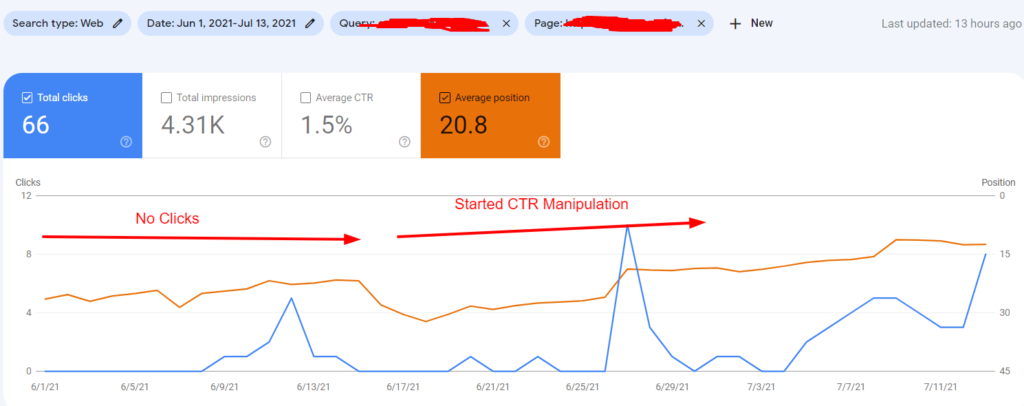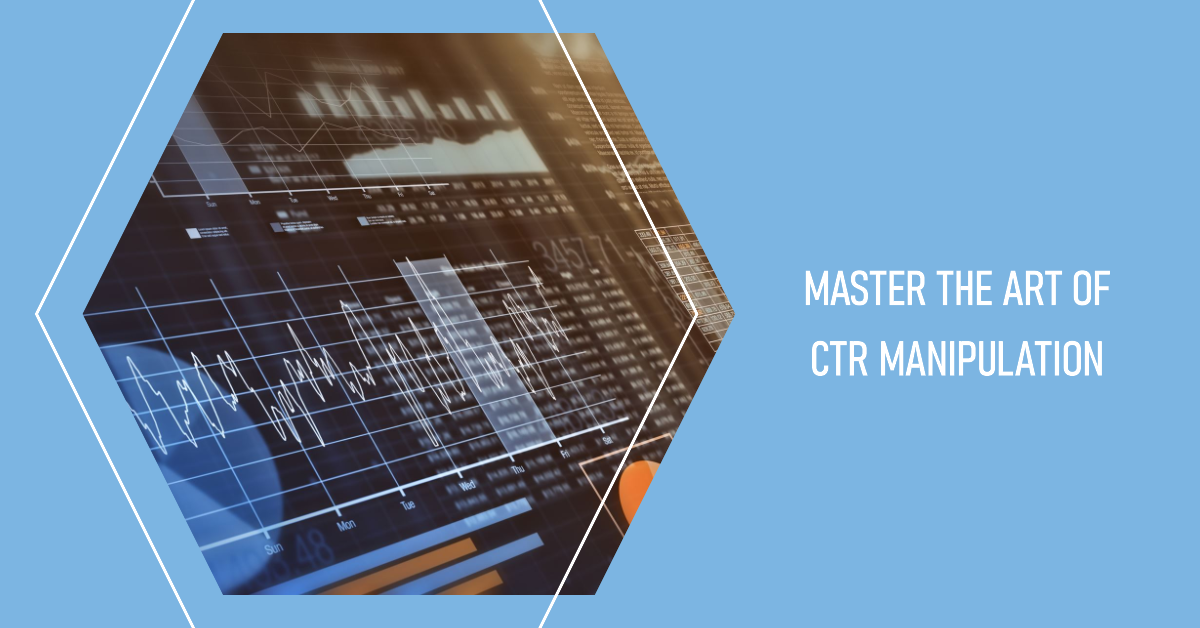CTR Control: A Game Changer for Digital Campaigns
The increase of CTR control has actually undeniably changed electronic marketing approaches, providing marketers with tools to improve engagement and drive web traffic efficiently. What implications might this stabilizing act hold for the future of electronic campaigns?
Understanding CTR Control
Although click-through price (CTR) manipulation might appear like an uncomplicated tactic in electronic advertising, it encompasses a variety of strategies intended at unnaturally blowing up involvement metrics. This control can take numerous forms, including the usage of click farms, crawlers, or misleading ad positionings that misinform consumers right into clicking. These approaches can jeopardize the honesty of efficiency data, making it testing for marketing professionals to determine the genuine efficiency of their projects.
In addition, CTR manipulation raises moral issues, as it threatens the transparency of digital marketing. The dependence on filled with air metrics can lead to misdirected advertising choices, skewing source appropriation and project strategies. Services might spend greatly in channels and strategies that appear successful but do not yield real engagement or conversions.

Advantages of Click-Through Rate Optimization
Enhancing click-through price (CTR) is necessary for enhancing the efficiency of electronic marketing campaigns. A higher CTR suggests that a bigger proportion of individuals are engaging with the web content, which can cause boosted website web traffic and far better conversion rates. By boosting CTR, brands can efficiently assign their advertising sources to initiatives that produce the greatest returns.
Among the key advantages of CTR optimization is the possibility for improved ad placement and lower expenses - CTR Manipulation. Platforms like Google Ads compensate higher CTRs with much better advertisement positioning and minimized cost-per-click (CPC), allowing online marketers to extend their budgets even more. Furthermore, a well-optimized CTR can boost brand name exposure, as greater interaction rates usually associate with boosted organic reach

Strategies for Reliable CTR Adjustment
To properly control click-through prices (CTR), marketers can utilize a range of tactical methods that enhance individual involvement and drive traffic. One basic method is enhancing ad copy to produce compelling and action-oriented language. CTR Manipulation. Making use of solid call-to-action (CTA) expressions motivates individuals to take immediate action, boosting the learn the facts here now probability of clicks
Another reliable technique is A/B testing, which permits marketers to contrast various advertisement variations. By systematically examining efficiency metrics, they can identify which aspects resonate ideal with the target market, therefore fine-tuning their techniques for maximum impact. In addition, leveraging aesthetically attractive graphics and succinct messaging can capture focus promptly, making it a lot more likely that customers will involve.

Last but not least, enhancing touchdown pages to make sure a seamless customer experience can reduce bounce rates and urge further communication, ultimately promoting higher CTR. By incorporating these strategies, online marketers can successfully manipulate CTR to accomplish their campaign objectives.
Gauging Success in Digital Projects
Determining success in digital projects calls for a clear understanding of crucial efficiency indicators (KPIs) that align with project purposes. KPIs offer as measurable metrics that assist examine the performance of various approaches employed throughout the campaign. Common KPIs include click-through prices (CTR), conversion rates, expense per acquisition (CERTIFIED PUBLIC ACCOUNTANT), and roi (ROI)
To successfully measure success, it is important to develop specific, measurable goals initially of the campaign. If the key objective is to increase brand recognition, metrics such as impacts and involvement rates might be prioritized. In contrast, campaigns concentrated on straight sales would certainly take advantage of a more detailed evaluation of conversion rates and income generated.
Routine evaluation of these KPIs makes it possible for marketers to make data-driven decisions, optimizing their methods in real-time. Utilizing analytical tools can aid in monitoring efficiency and identifying trends, enabling speedy modifications to enhance project results. Inevitably, an extensive technique to measuring success not only highlights areas for improvement however likewise reinforces the overall efficiency of digital advertising efforts, driving continual growth and interaction in the long-term.
Future Patterns in Digital Advertising And Marketing
Expecting the future of electronic advertising and marketing reveals a landscape formed by rapid technological improvements and changing customer behaviors. As man-made knowledge and equipment discovering continue to advance, marketers will progressively take advantage of these modern technologies to customize projects at an extraordinary scale. Predictive analytics will enable brand names to prepare for consumer demands, optimizing ad positionings and material shipment in genuine time.
Furthermore, the surge of voice search and clever gadgets is his explanation transforming exactly how consumers interact with digital material. Marketers will need to adjust their techniques to make sure visibility across numerous systems, including voice-activated aides. This shift demands an emphasis on conversational marketing, emphasizing engagement through dialogue instead than traditional marketing tactics.
Additionally, privacy issues are prompting modifications in information collection practices. Transparency and moral data usage will end up being extremely important, driving brand names to promote trust fund and loyalty among consumers. The ongoing development of social media systems will certainly likewise affect marketing strategies, with an enhanced emphasis on credibility and user-generated material.
Final Thought
In recap, CTR control represents a substantial development in digital advertising methods, offering instant advantages with improved engagement metrics. Nevertheless, the ethical factors to consider bordering such practices demand a mindful method to guarantee long-term brand integrity and genuine target market link. By striking an equilibrium between optimization techniques and authentic engagement, marketing experts can cultivate lasting connections with consumers. The recurring evolution of electronic advertising will depend upon this fragile interplay, shaping the future landscape of brand-consumer communications.